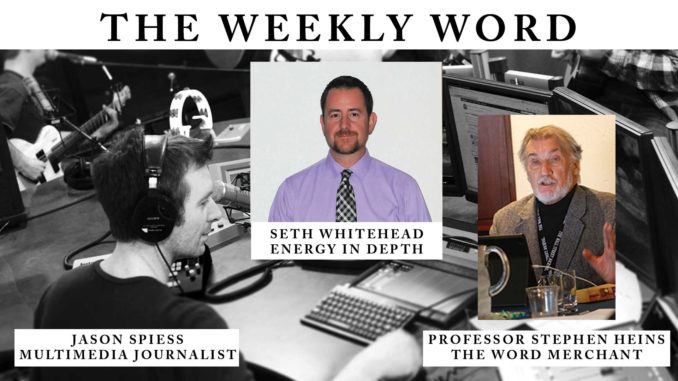

Summary written by Stephen Heins
Seth Whitehead, a spokesman for Energy in Depth, joins Jason Spiess and Stephen Heins on the Weekly Word.
Whitehead is a part of one of the leading advocate for the many benefits of unconventional drilling and he has just published a study about the release of methane in the five largest shale basins in the US.
Spiess asked him to talk more about Energy in Depth (EID) and his recent report. “Energy in Depth was founded in 2009 to correct the record on the reporting about fracking through data-based studies and an overall media outreach,” said Whitehead. In “Methane Emissions Continue to Decline in Top Oil and Gas Basins,” Whitehead points out that the release of methane has slowed while shale production has risen significantly, from 2011-2016. In fact, the National Oceanic and Atmospheric Agency has noted there are several other sources of methane, including wetlands, agriculture, and other biogenic sources.
In particular, the Bakken has reduced its methane by 8.3% since 2011, but more importantly, the oil recession of 2015 and some of 2016 has given North Dakota a chance to catch up by improving infrastructure and adding gathering facilities. Whitehead said the methane in the Bakken will continue to decline, if only because “companies have interest in not wasting methane as it a source of revenue for them.”
Spiess asked about the Marcellus and Utica shale development, whose methane emission are down by 26% and production has almost quadrupled. Heins mentioned that West Virginia is getting ready to spend $10’s of billions, both on shale production and pipelines, adding a significant amount of jobs to the hard-hit part of the coal belt.
Whitehead also mentioned that all of his data about the five major shale regions came directly from the EPA’s own records. As he said, Energy in Depth “has really put itself out there” with a mission of going on the record with a fact-based narrative.
Spiess wondered out-loud, if the shale industry shouldn’t personalize and humanize the unconventional drilling story more. And, talk more about the benefits to the surrounding communities. Whitehead agreed and highlighted a story about Ohio done by Jackie Stewart of EID and its reborn steel making industry for infrastructure and production equipment.
Heins added that he had fallen in love with the shale revolution story, its entrepreneurial spirit, and its real community, state and national economic development. He also discussed the environmental importance of liquid natural gas being shipped to emerging continents of Asia and Africa.
Finally, Whitehead predicted a prosperous future for shale, Spiess predicted that communities will continue to be improved by shared prosperity, and Heins believes that North Dakota is a billboard for American ideas and the cooperation between the public and private sectors.
Interview: Seth Whitehead, a spokesman for Energy in Depth, Stephen Heins, Word Merchant and Jason Spiess, The Crude Life.


